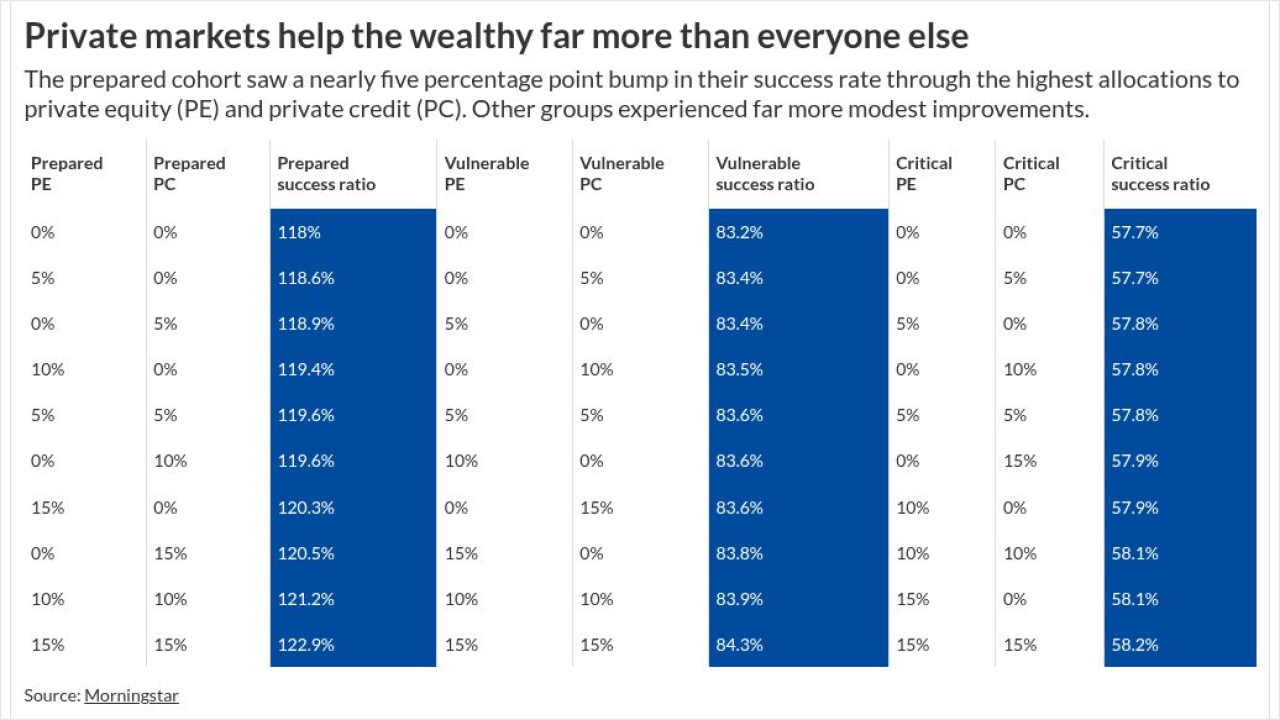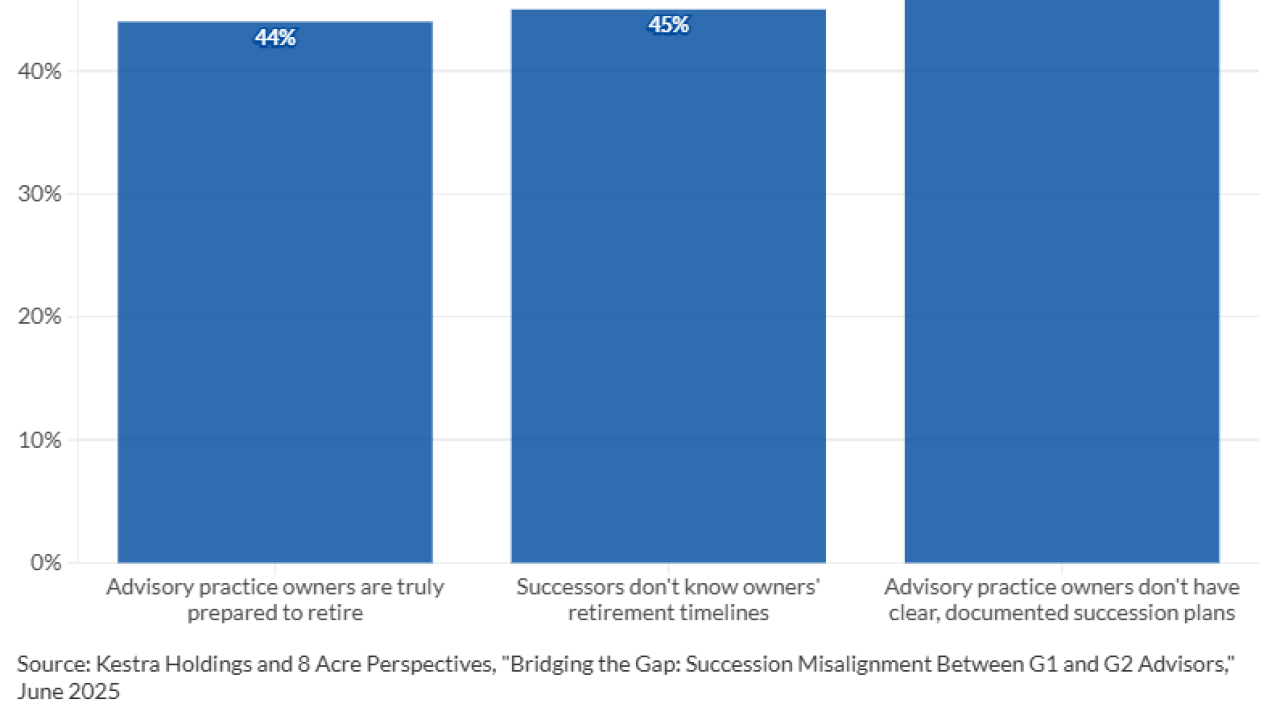Is perpetual independence possible? The founder of one of the country's largest independent broker-dealers is designing his own estate and succession plan to try to make it a reality.
In a riveting move, Cambridge Investment Research - ranked No. 9 on the latest FP50 list of U.S. independent broker-dealers - is constructing a strategy to transfer about $130 million of the company's total $300 million value from founder Eric Schwartz, 60, to company insiders. Ultimately Schwartz's plan would put the entire firm in the hands of Cambridge advisors and employees - a move aimed at preserving the firm's independence indefinitely.
"There's nobody in the industry who has done this" with such a large firm, says Schwartz, who is chairman and CEO. "This process is pretty much ensuring I will make 20% less [through sales of private stock] than I would by any other means, but it accomplishes what I want to do. It preserves the character and quality of the firm, hopefully, for multiple generations."
Once most components of the estate and succession strategy have been carried out, sometime in 2017, it will consist of several layers: stock transfer plans to advisors and employees; mechanisms to pass shares to charities and, later, back to the firm; and a deep bench of talent from which to select future leaders.
SUCCESSION CHALLENGE
Independent broker-dealers and RIAs of all sizes, with one or a few founders, are facing the quandary of how to design succession plans that will adequately compensate founders while keeping the firm intact. Many firms end up selling to larger competitors, banks, insurance companies or private equity firms, or through public offerings. Indeed, many of Cambridge's large competitors have taken one of these routes.
However, each of these scenarios involves turning the reins over to outsiders whose agendas can clash with the culture of the acquired firm. Schwartz vows to pave a new way. He is gambling that transferring ownership internally will preserve the unique culture that he and his team have built at the Fairfield, Iowa-based firm, which is known for its high-touch advisor service.
"Getting it right is going to take time and focus and commitment on the part of the management," says Rob Francais, CEO of the third-largest fee-only RIA firm in the country, Los Angeles-based Aspiriant. Though much smaller than Cambridge, Aspiriant is among the biggest U.S. planning firms to have a highly detailed internal succession plan in place. Aspiriant currently has 42 employee shareholders, serves 850 families and has $7.5 billion in AUM. By comparison, Cambridge has 2,241 advisors, $48.5 billion in AUM and will soon have about 60 shareholders.
"Personally, I think this is the future," Francais says. "Firms that have internal succession plans in place for multiple generations will win because that is what clients want. They want independent advice. They don't want turnover on their account. They want a consistent experience."
The components of the Cambridge succession strategy (see the adjacent story) offer a potential template for other growing firms interested in carving their own independent paths. Some of its tactics may also be worth considering for smaller firms, as well.
"Schwartz clearly sees the connection between his business model, his continuity planning and his company culture, which many business owners and advisors have never been taught," said Nick Niemann, an Omaha, Neb., succession planning attorney, after learning of the basic elements of Cambridge's approach. In order to preserve a firm's value and character, Niemann says, "These three concepts ... need to be intentionally and thoughtfully put together as one coherent plan."
Schwartz says he has been thinking about the firm's long-term future ever since Cambridge began to reach appreciable size about 15 years ago. But the subject of mortality moved to the fore earlier this year. First, Schwartz's 90-year-old mother died in January. Then, in April, Cambridge suddenly lost its No. 3 executive when Jim Guy, the company's first executive vice president and chief marketing officer, died. Guy had been the fourth member of Cambridge's board of directors - along with Schwartz, president and COO Amy Webber, and advisor Dan Sullivan, now senior VP of marketing. "The day Jim passed away," Schwartz recalls, "he was on my calendar to speak with me."
The two events pushed Schwartz, who is married but has no children, to continue the work he'd begun years earlier on his personal estate plan as it relates to the firm's succession plan.
In the coming decades, he says, he plans to transfer 2% to 3% of his stock every year, reducing his approximately 88% stake to 51% - a move that will eventually increase the number of shareholders to more than 100. "And it would probably make sense somewhere down the road, perhaps by the time I'm 80, for my interest to go below [51%]," he says. "I'm committed to holding 51% as long as people, by which I mean senior managers and advisors, view that as important."
Other elements of the Cambridge plan cover firm leadership, with a designated heir apparent (Webber) and a bench of talent behind her. For now, Schwartz says, he is increasingly turning over decision-making to Cambridge's management.
"If something happened to Eric," Webber says, "there would be a huge hole in our company, in our family here - but on the day-to-day task level, things are in place and would carry on." FP
Ann Marsh is a senior editor and the West Coast bureau chief of Financial Planning.
7-Point Succession Plan
The main pillars of Cambridge's strategy:
1. Stock Ownership Transfer
Cambridge sold its first 3% block of stock - worth a mere $200,000 - to its advisors in 1998. Last month, the firm was in the process of closing on the sale of 1.4% - worth close to $4.3 million - to about 37 advisors. The firm also has made multiple smaller stock offerings to senior managers; last year, for example, the number of those shareholders increased to 13 from eight.
CEO Eric Schwartz anticipates that, in coming years, Cambridge will convert to a C corporation from an S corporation, limited to 100 shareholders or fewer. Until then, however, the firm will take advantage of its current, more favorable tax status. C corps requires two layers of taxation, on corporate profits as well as on dividends distributed to shareholders; S corps are not themselves normally subject to tax on earnings.
2. Equity Participation
Because its current S corp status limits shareholders, Cambridge also offers equity participation programs to its 500 employees as well as advisors who bring in enough gross dealer concessions annually. Although the programs do not transfer stock, they help employees share in stock appreciation. For example, an employee might be eligible for the appreciation on 1,000 shares currently priced at $3. "If the stock goes from $3 to $6," Schwartz says, then upon vesting, "we write you a check for $3 times 1,000 shares which is $30,000."
The setup helps retain key employees, even those who can't yet own shares, says Cambridge President Amy Webber.
3. Employee Stock Option Plan
Cambridge intends to launch its ESOP sometime in 2017, when the existing equity plans vest. Schwartz intends for it to buy about 20% of his stock over time. The ESOP would be available to the broadest number of employees possible, including senior managers, middle managers and certain key employees, like programmers - but not to Cambridge's non-employee advisors.
4. Super Bonus Pool
Another retention strategy centers on an existing "super bonus pool," which rewards every employee for Cambridge's overall growth. Like the equity participation plan, it is aimed at employees who don't have equity stakes; it pays out based on the change in the stock's value over time, typically in five-year increments.
5. Transfers to Charitable Foundations
Schwartz says he aims to transfer another 20% of his ownership to charity. He and his wife have formed the Schwartz Family Foundation, which may name a yet-to-be-created Cambridge charitable foundation as a beneficiary.
Schwartz plans to create a mechanism letting Cambridge insiders buy back stock shares from both foundations - generating cash for charitable work while moving more of the firm's ownership to key players.
6. Designating an Heir
Schwartz says the firm's "presumed heir apparent" is Webber, a 15-year Cambridge veteran who joined the firm when it employed just 22 people. Below her, Cambridge also has a bench of 16 vice presidents from which to draw talent.
"Once [Schwartz] finds someone that makes decisions similarly to him," Webber says, "he has no problem giving them power to do their job. His ability to empower people has made a big difference here."
Schwartz doesn't anticipate that Webber would fully replace him for another 15 to 20 years. When she does, she will not have the same control that he does today, as the overwhelming majority shareholder.
The firm plans to concentrate power in the hands of a few board members by creating classes of voting and nonvoting stock: "Though we may not be the majority shareholders, one of the ideas is that we will retain control," Webber says.
Given that there will be more equal splits of power between those board members, conflicts could arise, she notes. However, given that everyone at Cambridge will hold substantial shares, she hopes the firm's overall welfare will remain uppermost in their priorities.
"If for one minute, then or now, I thought that I was not the best person for the [top] job, I'd be a part of the decision of who would be," Webber says. "I'm an owner of this company ... and sometimes you have to be part of a tough decision that impacts you negatively as a leader."
7. 'Hit by a Tractor' Plan
What happens if Schwartz gets, proverbially, "hit by a bus"?
"First off, I moved to the place in the country where there are no buses," Schwartz jokes of his decision to move the firm to Iowa from suburban Washington in 1992 to reduce the company's expenses. "So the question is, 'What if I get hit by the proverbial tractor?"
There's a plan for that, he says. Already, Schwartz says, his entire 88% stake is held in a series of trusts that he controls, along with Webber and other senior managers. If he were to die unexpectedly, those shares would transfer to his family foundation. Webber and other managers are also trustees of the family foundation. This structure is designed to ensure that, even in the short term, no estate tax will be owed by his estate and that ownership of the company will remain with Cambridge's leaders.
"Over time, the firm could buy [shares] back under the terms of the trust structure," he says.
The firm also has purchased millions of dollars in life insurance coverage on Schwartz to cover legal and accounting fees associated with the settlement of his estate, as well as the expenses of an executive search to replace him if, for any reason, Webber or another executive were not able to step in. - Ann Marsh





